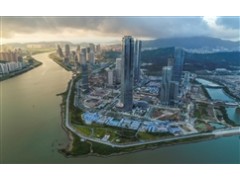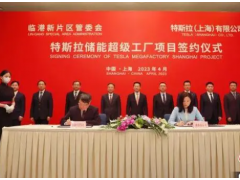The New Western Land-Sea Corridor, connecting the Silk Road Economic Belt in the north, the 21st Century Maritime Silk Road in the south, and the Yangtze River Economic Belt, has become an important link between China's domestic market and the international market after its construction in recent years. With the start of the Regional Comprehensive Economic Partnership, or RCEP, agreement, on January 1st this year, the New Western Land-Sea Corridor has been further empowered by policy. Starting today, SSTV has launched an all-media report titled "Crossing the Sea," taking people to visit Hainan’s Yangpu, Guangxi’s Beibu Gulf and Chongqing’s Guoyuan Port, feeling the convenience of trade brought by the land-sea corridor.
At Yangpu Port in Hainan Province, the “Tianxiuhe” ship was carrying high-performance polyethylene from the Port of Singapore. It is a material used in the industry, agriculture and construction fields. After transferring in Yangpu, these goods will be shipped to Qinzhou Port of Guangxi today, and finally arrive in Chongqing for distribution through land transportation. The shipment took nearly a week from Singapore to Yangpu port of China for transfer.
Daniel Jia, the correspondent from Singapore said, “We have received news that the cargo ship has successfully arrived at Yangpu Port of China. We are very excited, because the ‘Yangpu-Singapore’ route has been suspended for nearly two years since the pandemic outbreak began in 2020, and now it has finally completed its first voyage after the resumption of service. This route not only provides new vitality to the development of Singapore's port trade, but also opens up a new channel of economic and trade exchanges between China and Southeast Asia.”
Yangpu port is an important window of the New Western Land-Sea Corridor, as well as a key node of the golden waterway between the Pacific Ocean and the Indian Ocean. The direct distance between it and more than 20 ports in neighboring countries and regions is no more than 200 nautical miles. From here, ships can directly reach the major ASEAN coastal countries, and the whole world via Hong Kong and Singapore. At the same time, the Corridor has adopted multimodal transport combining railway, sea, road and other means, which significantly reduces the transport time.
Fu Zhiliang, the deputy director of Yangpu Transport and Oceanic Bureau noted, “The construction of Yangpu Port began in the 1980s, when only two berths of more than 20,000-tonnage class each were built. After 30 years of construction, it has now developed to nearly 50 berths. In particular, a bulk cargo berth has now developed into a large berth for materials such as oil and petrochemicals.”
In September 2019, the National Development and Reform Commission issued the Master Plan for the New Western Land-Sea Corridor. Yangpu Port has been upgraded from a "regional important port" to an "international hub." It has ushered in new opportunities for development. In 2021, the container throughput of domestic and foreign trade at Yangpu Port showed an increase of 24.1% year-on-year, and the growth rate ranked first among the one million TEU class national seaports for two consecutive years. At present, the expansion project of Yangpu International Container Terminal is accelerating. After completion, the annual container handling capacity is expected to reach 6.6 million TEUs.
In the first eight months of this year, the import and export value of goods trade in Hainan reached 125.75 billion yuan, up 45% year-on-year, 34.9 percentage points faster than the national growth rate in the same period. Its growth rate ranked the fifth in the country. Among which, Hainan's import and export to other RCEP member countries grew 25.2% to 44.2 billion yuan.
Chi Fulin, the president of China Institute for Reform and Development said, “The effects of RCEP policies are gradually showing. This is because the RCEP is an open, inclusive and shared partnership, and it has combined traditional and new economies. It has not only benefited the developed countries in the region, but also, more importantly, the underdeveloped countries in the region.”
With the increase of import and export orders, the number of international registered ships with Yangpu Port as their port of registry has reached 33, with a total of nearly 5.17 million deadweight tons. Hainan's gross tonnage of international ships has historically ranked second in China. Nowadays, Yangpu Port operates 39 routes, covering major domestic coastal ports and key ports in Southeast Asia. There are 18 foreign trade routes, involving all ASEAN coastal countries and they are extending to the South Pacific and Indian Ocean.





